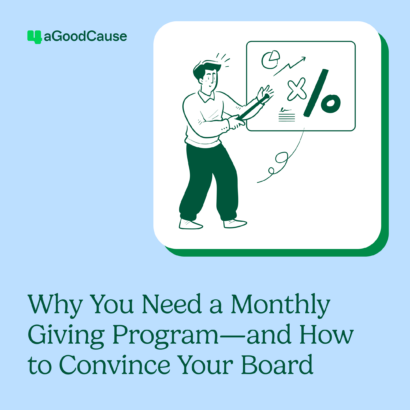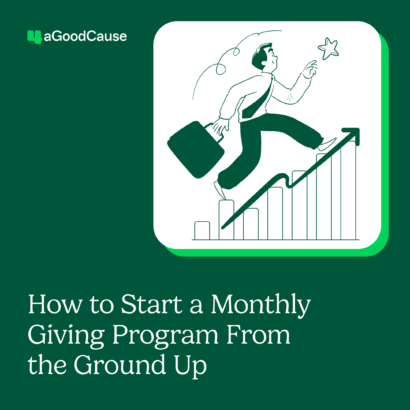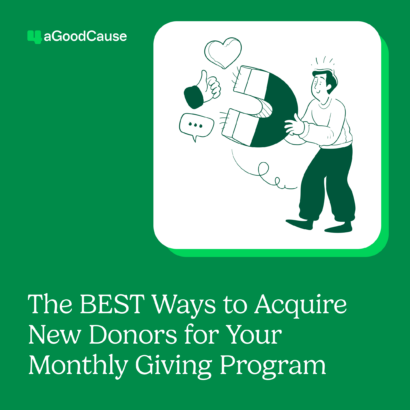There is a lot of talk in nonprofit circles about “donor love” but what does this phrase really mean? Some nonprofits interpret it as a way to thank donors…with kitschy gifts and cutesy thank you notes. We’d challenge you to think further about this concept.
To us, the concept of “donor love” is more about creating and sustaining relationships with your donors. Like any good relationship, you must consider the wants and needs of both parties. Your nonprofit needs both its audiences’ financial support and commitment to championing their cause. But after they have given, what more do donors want from you?
On a very basic level, donors want two things:
- To know their support (not just money) is appreciated.
- To see how their gift made a difference
This means that the ways in which you thank, communicate and connect with your donors after they give is important. Take time to show donors how much you appreciate them and how their money impacted your cause. Start with these suggestions.
Making donors feel appreciated
Correspondence with donors after they give should be a no-brainer for nonprofits. Charities Aid Foundation discovered that more than 80% of people consider immediate communication after donating to be important.
Making sure your donors feel appreciated may start with an automated “thank you” email the instant after they hit the “donate” button, but it should also go further. Automated emails are nice, but they don’t always hold enough meaning.
Consider how to make each individual donor feel like exactly that: an individual your organization sees and is grateful for.
Make them feel seen and appreciated through…
- Phone calls: A phone call from a real person can feel like a rarity in the era of spam calls. Test this out with a weekly task to call all donors who have donated in the past seven days. Handpick an especially warm, friendly employee for this task. These phone conversations or voicemails should be brief. Use them to honestly express gratitude to the donor for giving and for their continued support.
- Personalized emails: Take your automated email one step further. This could be either an individual, personalized email to the donor from one of your staff members or a special section in your organization’s e-newsletter thanking recent donors by name.
- Events: If you want to go even bigger, consider hosting an event to honor and thank donors. This could be as small as a monthly happy hour or as large as an annual gala.
Extensively thanking your donors has benefits for your organization too, in the form of heightened donor retention.
Showing donors their impact
The same poll we mentioned earlier from the Charities Aid Foundation reports that 68% of respondents valued hearing how the charity is having an impact after donation. Furthermore, 57% regarded regular updates on the charity’s work as important.
Keeping your donors updated and informed of your impact is another key to maintaining a good relationship.
Ways you can do this include…
- Using your social channels: Encourage your donors to follow you on social media. There, you can share stories of impact through a variety of mediums such as writing, photographs and videos. Plus, this is an easy way your supporters can see regular and real-time updates.
- Blogging your stories: Does your organization’s website have a blog? Use it as a way to tell the stories that are too long for a Facebook post.
- Explain the money: In your thank you email or phone call, take time to call out the specific amount the donor gave. Briefly explain what that donation will be used for, so the donor knows the direct impact their gift made.
Be transparent with your donors not only once after they give, but throughout the year as well. Updates about your cause and what is being accomplished thanks to their support (financial and otherwise) inspires and connects donors to your cause.
Offer extended involvement
In some cases, giving financially won’t be enough for your audience. They want to be involved in your cause at a deeper level.
To engage them at this level, try…
- Inviting them for a tour of your facility
- Asking them to join you at a fundraising event
- Including them in a call for volunteers
- Asking them to share the work your nonprofit is doing with their connections
If they’ve given to your cause, your audience is already invested. Continue to offer them the chance to be involved after they’ve donated.
Show your donors some love by saying thank you and maintaining a personal relationship. These practices will show you are engaged and care about their support, which will pay off when it comes time to ask them to give financially again. For more fundraising best practices and to raise more money for your cause, let 4aGoodCause help.



